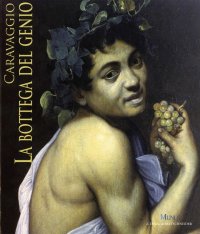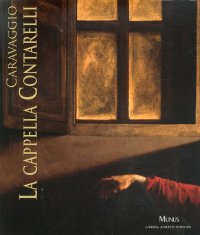L'ora dello spettatore. Come le immagini ci usano.
Edited by M. Di Monte and Gennari Santori F.
Roma, 2020; paperback, pp. 264, col. ill., cm 21x27.
cover price: € n.d.
|
Books included in the offer:
L'ora dello spettatore. Come le immagini ci usano.
Edited by M. Di Monte and Gennari Santori F.
Roma, 2020; paperback, pp. 264, col. ill., cm 21x27.
FREE (cover price: € n.d.)
Caravaggio. La Bottega del Genio
Roma, Museo Nazionale del Palazzo di Venezia - Sale Quattrocentesche, December 22, 2010 - May 29, 2011.
Edited by Falucci C.
Roma, 2010; paperback, pp. 118, b/w and col. ill., tavv., cm 24x28.
(Cataloghi Mostre. 49).
FREE (cover price: € 48.00)
Caravaggio. La Cappella Contarelli
Roma, Palazzo Venezia, March 10 - October 15, 2011.
Edited by M. Cardinali and De Ruggieri M. B.
Roma, 2011; paperback, pp. 150, 60 b/w ill., 60 col. ill., 60 b/w plates, col. plates, cm 24x28.
(Cataloghi Mostre. 50).
FREE (cover price: € 59.00)
Palazzo Margherita. Site of the embassy of the United States of America to the Italian Republic, Rome
Gangemi Editore
Edited by Brunori V.
English Text.
Roma, 2003; paperback, pp. 96, col. ill., cm 22x24.
(Arti Visive, Architettura e Urbanistica).
series: Arti Visive, Architettura e Urbanistica
ISBN: 88-492-0392-6 - EAN13: 9788849203929
Subject: Civil Architecture/Art,Collections,Essays (Art or Architecture),Painting,Sculpture
Period: 1400-1800 (XV-XVIII) Renaissance
Places: Rome
Languages: 
Weight: 0.41 kg
There are many joys in serving as the American Ambassador to Italy, but working every day in the beautiful Palazzo Margherita is surely among the most welcome. This building, which has been the American Embassy for close to sixty years, is more than the center for our many diplomatic activities in Italy; it is also a symbol of America's enduring friendship with Italy and its people.
In this booklet you will read of the history of these grounds and buildings, a chronicle that goes back to Julius Caesar, who had his summer palace here and where, it is said, he entertained Cleopatra. Beginning in the Middle Ages, continuing during the Renaissance, and ending in the early years of the last century, prominent Roman families occupied these grounds in their various houses and palaces. Finally, in the early years of the 20th century, the widowed Queen Margherita, who gave her name to the current building, took up residence here.
The booklet will also tell you something of the art that the Embassy and its grounds contain: paintings and architectural details, furniture and fountains, and, most notably, sculptures. Among these sculptures, which include statues from Imperial Roman times, is Giambologna's Venus. Visible from the street and softly illuminated at night, this masterpiece has come to define the American Embassy for the people of Rome, who see it as they walk along the storied Via Veneto.
We at the Embassy take seriously our responsibilities to preserve and enhance the artistic patrimony that is in our care, whether in the form of the buildings, their adornments, or the exquisite gardens and fountains. We thank you for visiting and hope that this small publication helps you to understand more fully the history and the treasures of the American diplomatic mission in Rome.











